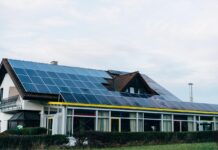
If you’ve noticed your utility bills increasing month after month, you’re not alone. Between the constant hum of electronics and the rising energy costs, it’s easy for homeowners to overspend without realizing it. However, energy-efficient upgrades can help you reduce those bills and even boost your property’s value at the same time.
As a homeowner running a home-based business, investing in smarter, greener systems can lead to significant long-term savings. Let’s explore the most impactful upgrades that make your home more energy-efficient, comfortable, and budget-friendly.
Smart Thermostats
A smart thermostat is one of the easiest ways to reduce wasted energy. Traditional thermostats run on static settings, meaning your system heats or cools your home even when no one’s around. On the other hand, smart thermostats learn your habits, like when you’re home, asleep, or out running errands, and automatically adjust the temperature for maximum efficiency. They can also be controlled from your phone, which is a game-changer if you work remotely or travel often.
Seal the Leaks and Beef Up Your Insulation
If you feel a draft near your windows or doors, your money might be literally slipping through the cracks. Air leaks are a hidden energy drain that makes your HVAC systems work overtime to maintain temperature. Start by weather-stripping doors, sealing window gaps, and adding caulk around vents or outlets. You can also bring in a professional for an energy audit. Many utility companies offer the service free or at a discount.
Upgrading insulation is another big win. Homes built decades ago often have outdated insulation that no longer meets today’s efficiency standards. More insulation can improve temperature control, helping your heating and cooling system run smoothly and cheaply.
Upgrade to Energy-Efficient Appliances
That old refrigerator in your kitchen might be costing you more than you think. Appliances, especially older models, are notorious energy hogs. When it’s time to replace, look for the ENERGY STAR® label. These products meet strict energy-efficiency guidelines set by the U.S. Environmental Protection Agency, and typically use less energy and water than their non-certified counterparts. If you’re running a home business that relies on equipment like printers, computers, or even coffee machines, energy efficiency models can reduce power usage across the board.
Use LEDs
Swapping out incandescent bulbs for LEDs might seem like a small step, but the impact adds up fast. LED bulbs use about 75% less energy and last up to 25 times longer. That means fewer replacements, less waste, and lower electric bills. They’re also more versatile than ever.
You can choose from soft white for cozy spaces or daylight for work areas where you need sharp, focused light. As a bonus, many smart lighting systems pair with home assistants like Google Home or Alexa, letting you control lights remotely or even schedule them automatically to turn off when not in use.
Install a Tankless Water Heater
Traditional water heaters constantly heat a large tank of water, even when you don’t need it. Tankless models only heat water as it’s being used, so no energy is wasted keeping a full tank hot all day. The upfront costs are higher, but over time, you’ll notice the savings.
Tankless systems last longer (often more than 20 years) and take up less space, freeing up storage or utility room square footage. For larger households or home-based businesses where multiple sinks, dishwashers, or showers are in frequent use, tankless water heaters can be a major efficiency upgrade.
Choose Better Windows and Roofs
Windows and roofs are often overlooked when homeowners think about energy efficiency, but they play a huge role in keeping heat in during winter and out during summer. Double-pane or triple-pane windows with low-emissivity (Low-E) coatings reflect infrared light, keeping your interiors more stable in temperature. That means less work for your HVAC system and lower monthly costs.
As for roofing, energy-efficient materials can make a dramatic difference in how much heat your home absorbs. Metal, tile, and slate roofs are excellent choices for reducing heat gain, especially in warmer climates. Sustainable roofing options are worth exploring. You can start by learning how much does a slate roof cost compared to other materials.
Endnote
Energy-efficient upgrades don’t just save you money. They’re about making your home and home-based business smarter, more sustainable, and more comfortable. Whether you start small with LEDs and a smart thermostat or go all-in with upgraded insulation, every step helps you cut waste and protect your budget from unpredictable energy prices.
Find a Home-Based Business to Start-Up >>> Hundreds of Business Listings.















































